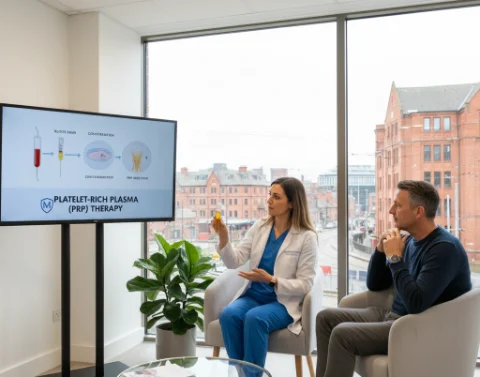Why PRP Therapy is Gaining Momentum in Manchester
-
Natural results, clinical science: PRP works with your body’s own platelets to stimulate repair, collagen production, and cell renewal. It’s regenerative, not cosmetic quick-fix.
-
Perfect for city life: With its minimal downtime, PRP suits Manchester’s professionals who want visible improvement without taking days off work.
-
Subtle, lasting improvements: Expect gradual enhancement in tone, texture, and vitality – no frozen expressions or artificial volume.
-
Trusted by qualified experts: More Manchester clinics are offering PRP under medical supervision, ensuring safety and measurable results for both skin and hair.
-
Versatile application: From fine lines and acne scars to early hair thinning, PRP adapts to your unique concerns.
If you’ve ever caught your reflection on Market Street and thought your skin looked more tired than you feel, PRP’s appeal becomes clear – it restores radiance quietly and naturally, using your body’s own biology.
In the sections ahead, we’ll unpack how PRP works, what to expect from treatment, and how Manchester’s clinics are refining the experience for modern, results-driven patients.
Find A Verified Clinic
Trusted PRP Experts, Local to You
Easily connect with qualified, verified professionals for safe, reliable treatment.


Dr Kai Skin and Hair Restoration
9 Maryville Drive, Didsbury, M20 3RB
~4.1 miles away
Dr Kai Skin and Hair Restoration Accreditations:
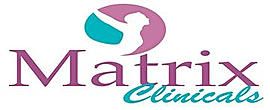
Matrix Clinicals
2 Greek Street, Stockport, SK3 8AB
~5.7 miles away
Matrix Clinicals Accreditations:

Beautifully Dunne
32 Thornhill Road, Stockport, SK4 3HL
~5.8 miles away
Beautifully Dunne Accreditations:
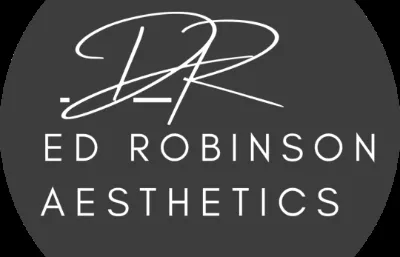
Dr Ed Robinson Aesthetics
Unit 3, The Courtyard, 283 Ashley Road, Hale, Altrincham, WA14 3NG
~8.7 miles away
Dr Ed Robinson Aesthetics Accreditations:
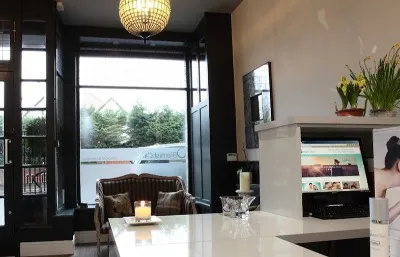
Blemish Clinic
40 Market Street, Edenfield, Ramsbottom, BL0 0JN
~13.1 miles away
Blemish Clinic Accreditations:

Medical Aesthetics Knutsford
Windsor Court, 103 Kings Street, Knutsford Cheshire, WA16 6EQ
~13.3 miles away
Medical Aesthetics Knutsford Accreditations:
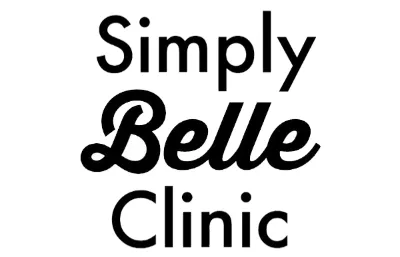
Simply Belle Clinic
25-27 Market Street, Hindley, Wigan, WN2 3AE
~13.9 miles away
Simply Belle Clinic Accreditations:
.jpg)
Caroline Balazs Consultancy
Unit 12 Beecham Court, Goose Green, Wigan, WN3 6PR
~17.1 miles away
Caroline Balazs Consultancy Accreditations:
Explore Clinics Near You on the Map
See exactly where verified PRP clinics are located across Manchester.
Zoom in, pan around, and click any marker to view each clinic’s profile, read reviews, and check their credentials before you book.

Your PRP Questions
Real Questions from Real People, Answered
Straightforward answers to the questions people like you are asking right now about PRP.

Cost of PRP treatment for hair?
Please give the cost and how many sessions needed to prevent complete hair loss and new hair
Hair loss.
Dear reader My name is Mo I'm interested to have prp treatment in your clinic and I have some questions How many ml of prp i will get injured ? Did you analyse prp There any other services after the treatment is done Thank you
To view all the PRP questions, please click here.
Or click here to ask your own question.
Find A PRP Clinic Near You In Manchester
Your next step starts close to home.
Manchester is home to some of the UK’s most experienced PRP practitioners – from boutique city-centre clinics to medical-led practices in Didsbury, Spinningfields, and Altrincham. Finding the right provider isn’t just about convenience; it’s about expertise, safety, and personal connection.

Explore Reputable PRP Clinics in Manchester
-
City Centre: Ideal for professionals looking for lunchtime appointments or discreet, central locations.
-
Clinics often specialise in facial PRP and “vampire facials.”
-
Many offer free consultations and combination packages with microneedling or LED therapy.
-
-
South Manchester (Didsbury, Chorlton, Altrincham):
-
Known for medical-led wellness clinics that combine PRP with holistic skincare and nutrition advice.
-
A quieter, more relaxed atmosphere for those who prefer a personal touch.
-
-
North & East Manchester (Prestwich, Salford, Stockport):
-
Often more affordable without compromising quality.
-
Some focus on hair restoration, offering PRP alongside transplant aftercare and scalp health assessments.
-
What to Look For When Booking
-
Verified credentials: Check for GMC, NMC, or GDC registration.
-
CQC registration: Especially important for clinics offering medical PRP treatments.
-
Transparent pricing: Costs should include consultation, procedure, and aftercare support.
-
Patient reviews: Look for authentic feedback on Google or Trustpilot, focusing on results and professionalism.
-
Comfort and trust: A good clinic feels clinical but calm – you should never feel rushed or pressured.
How to Make the Most of Your Consultation
-
Bring photos or describe your main concerns clearly – whether it’s hair thinning, fine lines, or under-eye texture.
-
Ask about the system used (e.g., RegenLab, Cellenis, MyCells).
-
Request to see before-and-after examples of previous patients with similar goals.
-
Discuss realistic timelines and maintenance plans.
- Use our Practitioner Assessment Tool.
Finding the right PRP practitioner in Manchester means more than choosing the closest clinic – it’s about partnering with someone who understands your goals, your biology, and your lifestyle.
What Is PRP Therapy?
Your body’s own power, refined by science.
An easy-to-understand look at how Platelet-Rich Plasma (PRP) therapy works – and why it’s one of Manchester’s most requested regenerative treatments.
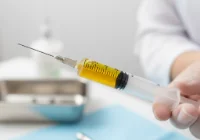
How PRP Uses Your Blood to Restore Skin and Hair
-
The science in brief: PRP stands for Platelet-Rich Plasma – a component of your blood packed with growth factors that help heal tissue, boost collagen, and encourage cell turnover.
-
The process: A clinician draws a small amount of blood (about the size of a routine test), spins it in a centrifuge, and separates the golden plasma layer rich in platelets. This is then injected or applied to your target area – face, scalp, or even joints.
-
Why it matters: These platelets act like messengers, releasing natural proteins that signal your skin or follicles to repair and regenerate.
-
Completely natural: Because PRP uses your own blood, there’s no synthetic filler, no foreign substance, and virtually no risk of allergic reaction.
-
Clinically proven roots: Before it became a skincare favourite, PRP was used in orthopaedics and sports medicine to help athletes heal faster – now it’s helping patients regenerate skin and hair with the same biological principles.
What Makes PRP Different from Other Aesthetic Treatments
-
Not a filler or toxin: PRP doesn’t mask or paralyse – it revitalises. Results develop gradually as your skin renews itself.
-
Customisable and versatile: Practitioners in Manchester often tailor PRP formulations for different concerns, such as under-eye texture, hair density, or fine lines.
-
Ideal for prevention: Increasingly, people in their late twenties and thirties are choosing PRP to maintain skin quality and slow early signs of ageing.
If you imagine your body as a repair workshop, PRP is simply concentrating the best part of your toolkit – your platelets – and directing them where they’re needed most.
How PRP Works: The Science Made Simple
From a simple blood draw to visible renewal.
Here’s how PRP therapy turns something already inside you into a clinically effective tool for smoother skin, stronger hair, and faster healing.
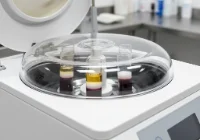
Step-by-Step: What Happens During a PRP Session
-
Step 1 – The blood draw: Your practitioner takes a small sample of blood, usually 10–30ml – about the same as a standard blood test.
-
Step 2 – Centrifugation: The sample is placed in a specialised centrifuge that spins at high speed to separate the red cells from the golden plasma containing concentrated platelets.
-
Step 3 – Extraction of platelet-rich plasma: This plasma, now several times richer in growth factors than normal blood, is carefully drawn into a sterile syringe.
-
Step 4 – Targeted application: Depending on your treatment goal, PRP is injected into precise areas of the skin or scalp, or applied topically following microneedling.
-
Step 5 – Cellular activation: Once introduced, the platelets release natural growth factors (PDGF, VEGF, TGF-β) that trigger collagen production, improve circulation, and repair tissue.
What Happens Next: Inside the Regeneration Process
-
Collagen remodelling begins: Fibroblast cells respond to the growth factors by producing new collagen and elastin – key for firmer, more resilient skin.
-
Improved blood flow: PRP encourages microvascular growth, enhancing oxygen and nutrient delivery to the treated area.
-
For hair, follicle stimulation: On the scalp, PRP helps dormant follicles re-enter the growth phase, thickening existing hair.
-
Visible changes: Most patients notice initial glow or reduced shedding after a few weeks, with peak results developing between 6 and 12 weeks.
Why Expertise Matters
-
Precision is everything: Platelet concentration can vary depending on the centrifuge system and practitioner technique.
-
Clinical environment: Reputable Manchester clinics use medical-grade equipment and aseptic technique for safety and consistency.
-
Tailored protocols: Some patients benefit from “double-spin” PRP for higher platelet density, while others respond better to leukocyte-poor formulations for sensitive skin.
PRP may sound futuristic, but it’s simply clever biology – your body’s own repair system, focused and refined. When applied by a trained practitioner, that tiny golden sample becomes a personalised dose of regeneration.
PRP For Skin Rejuvenation In Manchester
A natural refresh for skin that looks as alive as you feel.
PRP therapy has quickly become one of Manchester’s favourite treatments for those who want healthier, more radiant skin without harsh procedures or synthetic fillers.
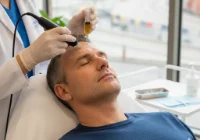
Why Manchester Patients Choose PRP for Their Skin
-
Boosts collagen naturally: PRP stimulates fibroblasts – the cells that produce collagen and elastin – helping to firm, smooth, and refine skin texture.
-
Brightens and balances tone: Improved circulation brings oxygen and nutrients to the surface, reducing dullness and leaving a subtle, healthy glow.
-
Softens fine lines and scarring: Many Manchester patients use PRP to improve the look of early wrinkles, sun damage, or mild acne scars.
-
Hydrates from within: Unlike topical creams that work only on the surface, PRP enhances the skin’s natural ability to retain moisture.
-
Safe for all skin tones: Because PRP relies on your own plasma, there’s minimal risk of pigmentation issues – a key advantage in multi-ethnic cities like Manchester.
What to Expect During a PRP Facial
-
Consultation: Your practitioner will assess your skin and discuss goals – whether it’s under-eye texture, dullness, or general rejuvenation.
-
Treatment process: A small blood sample is taken, spun to extract platelet-rich plasma, and then reintroduced via microneedling or microinjections.
-
Sensation: Most people describe it as a mild prickle or pressure, with numbing cream applied beforehand for comfort.
-
Recovery: Expect slight redness or warmth for 24–48 hours, similar to post-exercise glow – perfect timing if you’re planning a relaxed weekend in Didsbury or Chorlton.
-
Results: Subtle improvement appears within weeks, with smoother tone and elasticity developing gradually over a few months.
Combining PRP with Other Skin Treatments
-
PRP + Microneedling: Often called the “Vampire Facial”, this combination maximises absorption and speeds cell turnover.
-
PRP + Laser Resurfacing: Helps the skin heal faster post-laser, reducing downtime and redness.
-
PRP + Fillers: For patients wanting both volume and improved skin texture, clinics can safely combine the two under medical guidance.
PRP doesn’t change how you look – it restores the best version of your skin, quietly and effectively. For many in Manchester, it’s the modern equivalent of a full night’s rest, bottled and applied with precision.
PRP For Hair Loss In Manchester
A natural approach to stronger, fuller hair.
Hair thinning can creep up gradually – a widening part, more strands on your brush, less lift at the roots. In Manchester, more people are turning to PRP therapy for its ability to revive dormant follicles and support natural regrowth without medication or surgery.

How PRP Stimulates Hair Regrowth
-
Targeted follicle activation: PRP delivers growth factors directly to the scalp, re-energising weak or dormant hair follicles and prolonging their active growth phase.
-
Improved blood flow: By enhancing local circulation, PRP increases oxygen and nutrient delivery to the follicles, creating a healthier scalp environment.
-
Reduced shedding: Regular PRP sessions can slow hair fall and improve strand thickness, especially in the crown and hairline areas.
-
For men and women: It’s suitable for both, particularly for early-stage androgenetic alopecia (pattern hair loss) or post-pregnancy shedding.
What a PRP Hair Treatment Involves
-
Consultation and scalp assessment: Your practitioner will examine your scalp, discuss medical history, and set expectations for what PRP can achieve.
-
Blood draw and preparation: Around 10–20ml of blood is taken and processed in a centrifuge to extract the platelet-rich layer.
-
Scalp injections: Using a fine needle, PRP is injected in small, even sections across thinning areas – typically along the crown, temples, and parting line.
-
Comfort and downtime: Numbing cream or cooling devices are used; most patients describe mild pressure or tingling. You can return to work or the gym the next day.
-
Treatment course: Usually three to four sessions spaced four to six weeks apart, followed by maintenance every six to twelve months.
PRP as Part of a Broader Hair Restoration Plan
-
Combination therapies: Many Manchester clinics pair PRP with microneedling or low-level laser therapy for enhanced results.
-
Post-transplant support: PRP helps improve graft survival and speeds healing after hair transplant surgery.
-
Lifestyle matters: Nutrition, sleep, and stress management all influence how effectively PRP works – a reminder that hair health starts from within.
For those noticing early signs of thinning, PRP offers a proactive, biologically compatible solution – more like restoring an ecosystem than fixing a flaw. Many Manchester patients describe it as the point where frustration turns into action.
PRP Before & After: What Results To Expect
Realistic improvements, not overnight miracles.
PRP treatment works gradually, allowing your body’s natural regeneration to take the lead. Understanding what to expect before and after treatment helps set realistic goals and boosts satisfaction with your results.
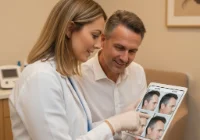
What to Expect Before Treatment
-
Consultation first: Every reputable Manchester clinic will start with a full consultation to discuss your goals, health, and suitability.
-
Baseline photos: Clinics often take “before” images under consistent lighting to track changes – useful when progress is subtle but meaningful.
-
Preparation matters: Staying hydrated, avoiding alcohol or anti-inflammatory medication for 48 hours, and eating well can all enhance platelet quality.
-
Mindset: PRP is a journey, not a single-session fix. Think of it as supporting your skin or scalp over time, not just chasing instant transformation.
Early Results: The First Few Weeks
-
For skin: Expect mild redness and a healthy glow within a few days, followed by gradual improvement in tone and texture over two to four weeks.
-
For hair: Some patients notice reduced shedding within the first month, as the scalp environment improves.
-
Subtle signs of progress: Tighter-feeling skin, smoother under-eyes, or baby hairs along the hairline often appear first.
-
Temporary effects: Slight sensitivity, warmth, or faint bruising can happen but usually fades within 24–48 hours.
Longer-Term Results: 6–12 Weeks and Beyond
-
Visible rejuvenation: Collagen and elastin production increases, giving skin a firmer, fresher look by week six to twelve.
-
Hair thickening: Follicles move back into their active growth phase, with improved density and texture becoming noticeable after a few months.
-
Lasting results: Most people maintain outcomes for 6–18 months, depending on age, lifestyle, and skincare routine.
-
Maintenance sessions: Regular top-ups (every six to twelve months) help sustain progress and prevent regression.
Factors That Influence Results
-
Lifestyle: Sleep, diet, and stress levels directly affect how well your body responds.
-
Clinic technique: The concentration of platelets and injection method can alter effectiveness – quality equipment and medical expertise matter.
-
Consistency: Missing sessions or aftercare steps may slow your overall progress.
A well-done PRP treatment doesn’t deliver a shock of change – it restores what’s quietly been missing. When you compare your before-and-after photos, the difference isn’t just visual; it’s how naturally you recognise yourself again.
The PRP Treatment Process In Manchester Clinics
Clarity builds confidence.
Knowing exactly what happens during a PRP appointment helps take away the guesswork, especially if you’re booking a treatment for the first time. Manchester clinics follow a structured, medically supervised process to ensure comfort, precision, and safety from start to finish.
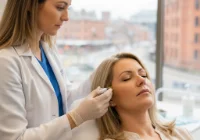
Step-by-Step: What Happens During Your PRP Appointment
-
1. Consultation and medical review: Your practitioner discusses your health history, treatment goals, and suitability for PRP. This is your chance to ask questions and share any concerns.
-
2. Preparation and blood draw: Around 10–30ml of blood is drawn from your arm – similar to a routine blood test. The vial is placed into a centrifuge to separate platelet-rich plasma from red and white blood cells.
-
3. PRP extraction: The golden plasma layer containing concentrated platelets is carefully withdrawn using a sterile syringe.
-
4. Application to target area: Depending on your chosen treatment, the PRP is injected into the skin or scalp, or applied topically after microneedling.
-
5. Sensation: Mild pinching or warmth is common. Clinics usually apply numbing cream or use cooling devices for comfort.
-
6. Finishing and aftercare: A soothing serum or cooling compress may be applied. You’ll leave with personalised aftercare instructions and a clear recovery plan.
How Long Does It Take?
-
Total time: Most PRP sessions last around 45–60 minutes.
-
Treatment course: Typically, you’ll need three to four sessions spaced four to six weeks apart.
-
Downtime: Expect light redness or tenderness for a day or two – many patients return to work the same afternoon.
Why Choose a Qualified PRP Clinic in Manchester
-
Safety and hygiene: Medical-grade centrifuges, sterile consumables, and single-use needles are standard in reputable clinics.
-
Training and expertise: Look for GMC, NMC, or GDC registration – this ensures your practitioner understands both the science and aesthetics of PRP.
-
Personalised approach: Clinics adapt treatment depth, platelet concentration, and aftercare to your skin or scalp’s unique needs.
A well-run PRP appointment should feel calm, organised, and clinical – more like a precision health procedure than a beauty treatment. By the time you leave, you’ll have taken the first step in a process your body continues refining quietly over the weeks ahead.
How To Prepare For PRP Treatment
Small steps that make a big difference.
Good preparation can improve the quality of your plasma and help your skin or scalp respond better to PRP therapy. Manchester clinics emphasise simple but important habits to ensure each session delivers the best possible outcome.

What to Do Before Your Appointment
-
Hydrate well: Aim for 1.5 to 2 litres of water per day in the 48 hours before your appointment. Hydrated blood separates more efficiently in the centrifuge, producing higher-quality plasma.
-
Eat a balanced meal: A light, protein-rich meal before your session helps stabilise blood sugar and reduces the chance of light-headedness.
-
Get enough rest: Your body heals best when well-rested. Aim for a full night’s sleep before treatment.
-
Plan your schedule: PRP involves minimal downtime, but mild redness or tenderness can last up to 48 hours, so try to avoid important social events immediately after.
What to Avoid Before Treatment
-
Alcohol and smoking: Both can reduce platelet function and slow healing. Avoid for at least 24–48 hours beforehand.
-
Anti-inflammatories: Medications like ibuprofen or aspirin may interfere with the inflammatory response PRP relies on to trigger healing. Check with your practitioner if unsure.
-
Retinoids or exfoliating acids: Pause active skincare such as retinol or chemical exfoliants for three to five days before your session.
-
Sun exposure: Avoid tanning or sunburn before treatment – inflamed or sensitised skin is more prone to irritation.
How to Arrive on the Day
-
Clean skin or scalp: Come without makeup, lotion, or hair products.
-
Comfortable clothing: Loose collars or tops make access easier for facial or scalp treatments.
-
Arrive calm: Bring headphones or something to read – it’s a clinical but relaxed experience. Many Manchester patients say it feels more like a detailed facial than a medical procedure.
Preparation may feel minor, but it directly influences platelet concentration and post-treatment comfort. A few mindful steps before you arrive can turn a good session into an exceptional one.
Aftercare & Recovery
Your results don’t end when the session does.
PRP therapy continues to work beneath the surface long after you leave the clinic. Following the right aftercare steps helps your skin or scalp recover smoothly and enhances your final results.

What to Expect in the First 48 Hours
-
Mild redness and warmth: This is normal and signals that your body’s healing response has begun. It usually settles within one to two days.
-
Slight tenderness or tightness: Some patients describe a “post-workout” sensation, particularly on the face or scalp. Avoid touching or rubbing the area.
-
Minimal bruising: Tiny injection marks or faint bruises can appear but fade quickly with gentle care.
Do’s and Don’ts for Optimal Recovery
Do:
-
Keep the area clean with tepid water and a mild, fragrance-free cleanser.
-
Apply a light, soothing serum or moisturiser recommended by your practitioner.
-
Use broad-spectrum SPF daily to protect new skin cells from UV damage.
-
Stay hydrated and maintain a nutrient-rich diet to support collagen production.
Don’t:
-
Apply makeup or heavy skincare for 24 hours post-treatment.
-
Use retinoids, acids, or exfoliants for three days.
-
Visit saunas, steam rooms, or gyms for 48 hours, as heat can increase swelling.
-
Take anti-inflammatory medication unless advised by your clinician – inflammation is part of the healing process PRP needs to work.
Longer-Term Care
-
Be patient: Skin rejuvenation unfolds gradually over weeks; hair regrowth can take several months.
-
Protect your investment: Follow your practitioner’s plan for top-up sessions every six to twelve months.
-
Healthy habits count: Regular sleep, hydration, and balanced nutrition all extend your results.
PRP is a partnership between you and your body. Treat the first few days like a recovery window – a quiet investment in the visible renewal that follows.
Is PRP Safe? Understanding The Risks
Safety comes first – and with PRP, it’s built in.
Because Platelet-Rich Plasma is derived from your own blood, the treatment is considered one of the safest options in regenerative aesthetics. Still, understanding potential side effects and knowing how to choose a qualified practitioner are key to protecting your results.
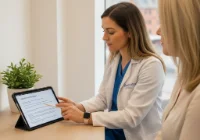
Why PRP Is Generally Low Risk
-
Autologous treatment: PRP uses your own plasma, so there’s no risk of allergic reaction or rejection.
-
No synthetic substances: Unlike fillers or other injectables, PRP contains no additives or foreign materials.
-
Minimal downtime: Side effects are usually mild – short-lived redness, tenderness, or slight bruising where the injections were made.
-
Clinically established: PRP has decades of medical use behind it, from wound healing to sports medicine, giving it a strong safety record when performed correctly.
Possible Side Effects and How to Manage Them
-
Mild swelling or bruising: Apply a cold compress for a few minutes at a time during the first day if needed.
-
Tenderness or tightness: Common in facial or scalp treatments and typically resolves within 48 hours.
-
Temporary pigment changes: Rare, but may occur in darker skin tones; always discuss your skin history during consultation.
-
Infection or inflammation: Extremely uncommon when proper sterile technique is followed, but contact your clinic if pain, heat, or pus develops.
When to Be Cautious or Delay Treatment
-
Active skin infection or inflammation at the target area.
-
Recent use of strong retinoids or chemical peels.
-
Blood or platelet disorders, autoimmune conditions, or active cancer.
-
Pregnancy or breastfeeding (as a precautionary measure).
-
Regular use of anticoagulant medication – always disclose this to your practitioner.
Choosing a Safe PRP Provider in Manchester
-
Look for medical credentials: GMC, NMC, or GDC registration indicates clinical training and accountability.
-
Ask about equipment: Clinics should use certified centrifuges and single-use needles under strict aseptic conditions.
-
Confirm CQC standards: Clinics performing medical PRP (for joints or injuries) must be CQC registered; for cosmetic use, check their hygiene and governance policies.
-
Avoid red flags: Unrealistically cheap prices, vague practitioner details, or “guaranteed results” claims are warning signs.
PRP’s reputation for safety rests on one simple rule: your body provides the healing power, but the practitioner controls how it’s used. A well-qualified clinician ensures that partnership stays both effective and secure.
PRP Costs In Manchester
Transparent pricing, no surprises.
Understanding the real cost of PRP treatment in Manchester helps you plan your treatment journey with confidence. While prices vary between clinics, knowing what influences those costs ensures you’re comparing like for like.
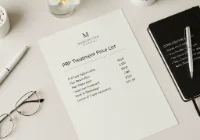
Average PRP Prices in Manchester
-
Budget range (£80–£150): Usually covers introductory “vampire facial” sessions or basic scalp treatments. Often found in salons or new clinics – always check practitioner credentials.
-
Mid-range (£200–£350): The most common bracket for single sessions in medical-grade aesthetic clinics, suitable for facial or hair PRP.
-
Premium range (£400–£650): Typically led by doctors or dermatology-trained clinicians using advanced centrifuge systems and offering tailored protocols or combination treatments.
Most Manchester clinics recommend a course of 3–4 sessions spaced four to six weeks apart, followed by maintenance every six to twelve months. Many offer package deals that reduce per-session costs.
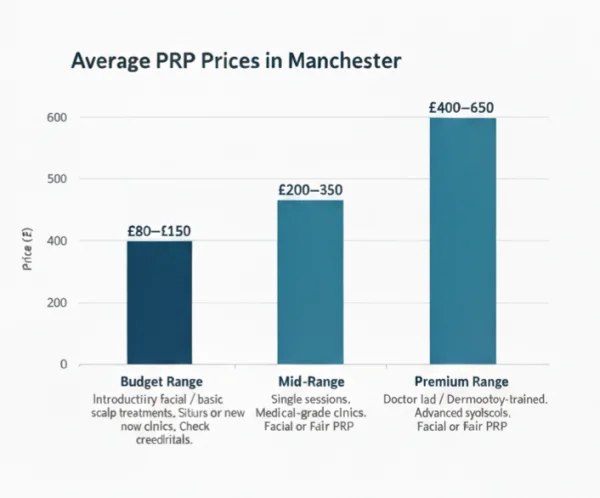
What Determines the Price
-
Practitioner qualifications: Experienced medical professionals command higher fees for their precision and safety standards.
-
Equipment quality: Certified centrifuges and sterile consumables affect both cost and consistency of platelet concentration.
-
Treatment area: Full-face or combined face-and-neck PRP costs more than targeted under-eye or scalp sessions.
-
Add-ons and combinations: Pairing PRP with microneedling or laser therapy can improve results but increases cost.
-
Clinic reputation and location: Central Manchester clinics may price higher due to demand and overheads, while suburban practices might offer more flexible packages.
Why Cheaper Isn’t Always Better
-
Quality control matters: Low-cost PRP may involve under-concentrated plasma or non-sterile practices that risk infection or poor results.
-
Transparency builds trust: Reputable clinics provide written treatment plans and full cost breakdowns before you book.
-
You’re paying for expertise: Think of PRP as an investment in your skin or hair’s long-term health, not just a one-off aesthetic expense.
Being informed about pricing ensures you make a decision based on value, safety, and quality – not just the lowest quote.
How To Choose A PRP Practitioner In Manchester
Your results depend on who’s holding the syringe.
PRP therapy is only as effective as the expertise behind it. With a growing number of clinics across Manchester offering the treatment, knowing how to choose a qualified, safe, and skilled practitioner makes all the difference between a confident experience and a disappointing one.

What to Look for in a Qualified PRP Practitioner
-
Medical credentials: Choose a practitioner registered with the GMC, NMC, or GDC. These professionals are trained in anatomy, aseptic technique, and managing complications.
-
Specific PRP training: Ask whether they have certified PRP training or experience using recognised systems such as Cellenis, RegenLab, or MyCells.
-
Clinical environment: Treatments should take place in a sterile, medical-grade setting – not a home salon or beauty room.
-
Transparent consultation: Reputable practitioners conduct a full medical history, explain realistic outcomes, and never pressure you to book immediately.
-
CQC registration (where applicable): Clinics performing medical PRP (for joints or injury recovery) should be registered with the Care Quality Commission for patient safety compliance.
Red Flags to Avoid
-
Unusually cheap prices: If the cost seems far below Manchester’s average (£200–£350 per session), ask what’s included – cheaper often means compromised quality or diluted plasma.
-
No visible credentials: Avoid anyone who cannot provide registration details or confirm their training background.
-
One-size-fits-all packages: PRP should be customised for your skin, scalp, or medical history – not offered as a blanket treatment.
-
Overpromising results: Be cautious of claims like “instant transformation” or “guaranteed hair regrowth.” PRP delivers gradual, biological improvement, not overnight miracles.
-
Poor communication or hygiene: Rushed consultations, unclear aftercare, or visibly unclean facilities are non-negotiable warning signs.
Questions to Ask Before You Book
-
Who will perform my treatment, and what are their medical qualifications?
-
How many PRP procedures do you perform each month?
-
What system or centrifuge do you use, and why?
-
How do you ensure sterile conditions during the procedure?
-
What results can I realistically expect, and how many sessions will I need?
Why Choosing Wisely Matters
Your PRP treatment isn’t just about the product – it’s about precision. Skilled practitioners understand depth, dosage, and delivery. In Manchester’s competitive aesthetics scene, the best clinicians combine science with artistry, ensuring you walk away looking refreshed, not “treated.”
Why Manchester Patients Choose PRP
Because results that look natural never go out of style.
PRP therapy has become a mainstay for Manchester’s professionals, creatives, and health-conscious residents who want meaningful skin and hair improvements without dramatic change or lengthy recovery time.

What Makes PRP Stand Out in Manchester’s Aesthetic Scene
-
Natural, authentic results: PRP works with your own biology to restore vitality, helping patients look refreshed rather than “done.”
-
Low downtime, high flexibility: With most treatments taking under an hour and minimal redness, it fits easily into busy schedules – whether you’re based in Spinningfields, the Northern Quarter, or Trafford.
-
Appeals to both men and women: From early hair thinning to skin texture or under-eye concerns, PRP bridges gender lines in a way few aesthetic treatments do.
-
Holistic, regenerative ethos: Manchester’s wellness culture is shifting toward treatments that support long-term skin health, not just quick fixes. PRP sits perfectly within that trend.
-
Clinically trusted: More medically-led clinics are introducing PRP, reinforcing its reputation as a science-backed, not gimmick-driven, procedure.
The Emotional Side of Choosing PRP
-
Subtle confidence boost: Many patients describe feeling “more like themselves” as small improvements add up.
-
Trust in their own body: Using one’s own plasma makes PRP feel empowering – your body doing the work, your clinic guiding the process.
-
Shared experiences: In a city that values individuality, PRP’s ability to deliver bespoke, understated enhancement resonates deeply with Manchester’s audience.
How PRP Fits Modern Manchester Living
-
Urban skin repair: Pollution, stress, and long working hours often dull the complexion. PRP directly supports recovery at a cellular level.
-
Prevention, not correction: Younger patients use PRP to preserve skin quality early, viewing it as skincare’s next evolution rather than an intervention.
-
A “wellness-first” mindset: With yoga studios, nutrition coaches, and cold-water therapy trending, regenerative aesthetics like PRP are part of a wider lifestyle shift.
In a city known for its balance of grit and grace, PRP’s appeal is simple: it helps people feel naturally confident without erasing who they are.
Regulations & Responsible Advertising
Good treatment starts with good governance.
In the UK, PRP treatments are tightly guided by professional standards and advertising rules that protect patients from misleading claims. Understanding these safeguards helps you choose a practitioner who values integrity as much as results.

UK Regulations You Should Know
-
Professional registration:
-
Medical practitioners must be registered with the General Medical Council (GMC), Nursing and Midwifery Council (NMC), or General Dental Council (GDC) to perform PRP injections safely and ethically.
-
Always verify your clinician’s registration on the relevant official database before booking.
-
-
CQC oversight:
-
Clinics performing PRP for medical purposes (e.g., injury recovery, joint pain) must be registered with the Care Quality Commission (CQC).
-
Cosmetic-only PRP (for skin or hair) doesn’t legally require registration but should still meet clinical hygiene and governance standards.
-
-
CAP & ASA advertising rules:
-
The Advertising Standards Authority (ASA) and Committee of Advertising Practice (CAP) prohibit marketing that makes exaggerated or misleading medical claims.
-
Clinics must avoid “before-and-after” comparisons that imply guaranteed results, and cannot target anyone under 18 with cosmetic promotions.
-
-
Informed consent:
-
You have the right to a full explanation of the risks, benefits, and alternatives before treatment.
-
Written consent should always be obtained, with cooling-off time offered for new patients.
-
What Ethical Clinics in Manchester Do Differently
-
Transparency first: Clear pricing, realistic results, and honest timelines.
-
Evidence-led practice: Procedures are explained in plain English with references to real clinical data, not hype.
-
Qualified supervision: Doctors and nurse prescribers oversee all injectable procedures.
-
Patient-first advertising: Imagery and messaging that focus on wellbeing, not insecurity.
Why These Rules Protect You
Regulations aren’t red tape – they’re reassurance. They ensure that what’s offered in Manchester’s aesthetic clinics is safe, accountable, and respectful. In an industry where “quick fixes” still make headlines, ethical PRP practitioners earn trust by staying transparent, not trendy.
Compare PRP To Other Treatments
Finding the right treatment for your goals.
PRP therapy is powerful, but it’s not the only option for rejuvenating skin or restoring hair. Comparing PRP with other popular treatments helps you understand where it fits – and when it might be the smarter, more sustainable choice.
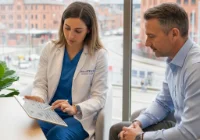
PRP vs. Dermal Fillers
-
Natural vs. synthetic: PRP uses your body’s own platelets; fillers use hyaluronic acid or similar compounds to add volume.
-
Results: PRP improves texture and tone over time, while fillers deliver immediate volume and contour.
-
Longevity: Fillers last 6–18 months before being reabsorbed; PRP can improve skin quality for a similar duration but through regeneration, not replacement.
-
Best for: Those seeking subtle, overall rejuvenation rather than structural correction.
PRP vs. Microneedling
-
Mechanism: Microneedling stimulates collagen by creating micro-injuries, while PRP adds a biological boost with growth factors that accelerate healing.
-
Results: When combined (the “Vampire Facial”), results are enhanced – faster healing, more even tone, and improved elasticity.
-
Downtime: Both have mild redness for a day or two, but PRP can reduce inflammation post-needling.
PRP vs. Laser Resurfacing
-
Intensity: Laser treatments remove or heat layers of skin for renewal, whereas PRP works more gently at a cellular level.
-
Downtime: Laser can require several days of recovery; PRP typically just 24–48 hours.
-
Safety: PRP suits all skin tones, while some lasers carry pigmentation risks in darker complexions.
-
Best for: Patients preferring minimal disruption and a natural approach.
PRP vs. Hair Transplant
-
Procedure type: Hair transplant moves follicles surgically; PRP strengthens existing follicles non-surgically.
-
Ideal candidate: PRP suits early to moderate hair thinning; transplant addresses advanced baldness.
-
Combination approach: Many Manchester clinics use PRP post-transplant to enhance graft survival and speed healing.
When PRP Wins
-
Biological synergy: Works with your body’s natural repair mechanisms rather than forcing change.
-
Versatility: Effective for both facial rejuvenation and scalp stimulation.
-
Longevity through maintenance: Regular sessions keep results cumulative and natural-looking.
-
Balanced recovery: Minimal disruption to daily life – ideal for busy Manchester lifestyles.
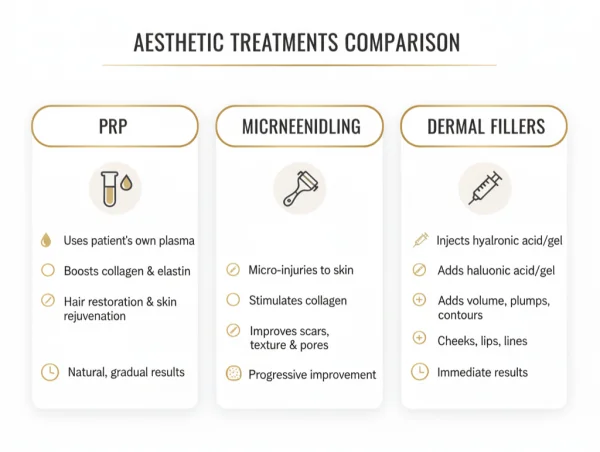
Choosing between treatments isn’t about better or worse – it’s about what aligns with your needs, budget, and comfort level. A consultation with a medically qualified practitioner will help tailor the right path for you.
Final Thoughts: Is PRP Right For You?
A treatment that works with you, not on you.
PRP therapy isn’t about chasing trends or fast fixes – it’s about choosing a treatment that honours how your body naturally heals and renews itself. For many Manchester patients, that’s exactly why it resonates.

When PRP Is the Right Choice
-
You prefer natural improvement: PRP enhances what’s already there – smoother skin, stronger hair, a fresher look – without adding anything artificial.
-
You want subtle, steady results: It’s ideal if you’re after long-term rejuvenation that looks effortless rather than immediate or dramatic.
-
You’re ready to invest in maintenance: PRP rewards consistency. A short course of sessions, followed by yearly top-ups, keeps results building quietly in the background.
-
You value safety and science: With its autologous origin and clinical heritage, PRP is one of the safest regenerative treatments available.
When Another Option Might Suit You Better
-
You want instant results: Fillers or laser resurfacing can deliver faster visible change if that’s your priority.
-
You have advanced hair loss or deep wrinkles: PRP can complement but not replace surgical or structural interventions.
-
You have certain medical conditions: Blood disorders, autoimmune conditions, or pregnancy may make PRP unsuitable – always confirm with a clinician.
Making an Informed Decision
The best PRP experiences start with clear expectations and the right practitioner. Think of it less as an indulgence and more as an investment in long-term skin and scalp health – a way to future-proof how you look and feel.
Whether you’re booking your first session or simply exploring your options, the fact you’re reading this shows you’re asking the right questions. And that’s where good aesthetics begins: informed, confident, and entirely in your control.
Clinic Owners - Unlock The Power Of PRP
Join the growing number of aesthetic professionals offering Platelet-Rich Plasma treatments that deliver natural, visible results and long-term patient satisfaction.

Platelet Rich Plasma (PRP) has become one of the most in-demand treatments in modern aesthetics, valued for its ability to rejuvenate skin, stimulate hair growth, and accelerate healing using the body’s own natural processes. As patient demand for regenerative treatments continues to rise, now is the perfect time to integrate PRP into your clinic’s portfolio.
Whether you’re looking to attract new clients, enhance treatment outcomes, or expand your regenerative medicine offering, PRP provides a versatile and profitable solution. With minimal downtime, high safety margins, and growing public awareness, it’s a treatment that delivers results and builds trust.
Find out how to introduce PRP to your clinic today.
Want to add your clinic to our PRP Search?
Join ConsultingRoom.com today and unlock the UK's most trusted aesthetics network for clinics like yours. For just £20 per month (inc VAT), you'll get:
- A professional clinic listing built for you
- Full access to 50+ business and marketing tools
- Instant credibility with patients searching for safe, reputable clinics
Start My Membership for £20/month
Simply click here to complete the form on our registration page, and we will have you up and running quickly.
No contracts, no tie-ins - cancel anytime.
One new client every 3 years covers the cost.
PRP Quick FAQs
Clear, concise answers to common queries
A simple, no-fluff roundup of frequent PRP questions to help you get the facts fast.

Can PRP be used preventatively, before visible signs of ageing or hair loss?
Yes. Many people use PRP proactively in their late 20s or 30s to slow collagen loss and keep hair follicles active. Early intervention often leads to better, longer-lasting results.
How does PRP differ from stem cell therapy?
PRP uses your platelets to release growth factors that stimulate repair. Stem cell therapy involves harvesting and reintroducing stem cells, which is more complex, costly, and not widely available in aesthetic clinics.
Is PRP suitable for darker skin tones?
Yes. PRP is safe across all Fitzpatrick skin types because it doesn’t rely on heat or light energy, which can trigger hyperpigmentation. It’s often chosen as a safer alternative to lasers for darker skin.
Can PRP help after pregnancy?
Postpartum hair shedding and changes in skin texture are common. PRP can safely support scalp recovery and skin rejuvenation once you’re no longer breastfeeding, as most practitioners avoid treatment during that period.
What’s the difference between single-spin and double-spin PRP?
Single-spin centrifugation produces a moderate concentration of platelets. Double-spin methods refine this further, often leading to higher platelet counts. The technique used can influence results, so it’s worth asking your practitioner.
Does hydration really affect PRP results?
Yes. Being well-hydrated improves the quality of your blood sample, which can increase platelet concentration. Practitioners often recommend drinking 1.5–2 litres of water in the days before treatment.
Can PRP be combined with Botox or fillers?
Yes. Many people combine PRP with Botox for movement lines or fillers for lost volume. PRP improves skin quality, while injectables address shape and wrinkles, creating a more complete result.
How soon can I exercise after PRP?
It’s best to avoid strenuous exercise, saunas, and hot yoga for 24–48 hours after treatment. Heat and sweat can increase swelling and irritation at the injection sites.
Does PRP work for under-eye dark circles?
Yes, in some cases. By stimulating collagen and improving blood flow, PRP can reduce hollowness and pigmentation under the eyes. Results vary depending on whether circles are caused by skin thinning, vessels, or pigmentation.
Is there a “best age” to start PRP?
There’s no strict age, but most people start in their 30s or 40s, when early ageing or mild hair thinning appears. Younger patients may use it preventatively, while older patients often combine PRP with other treatments.
Can PRP be done if I’ve had filler or laser recently?
Yes, but timing matters. PRP is often used after laser or microneedling to speed healing. If you’ve had fillers, most practitioners recommend spacing treatments at least 2–4 weeks apart.
Is PRP available on the NHS?
In rare cases, yes—mainly for joint conditions or wound healing. It isn’t offered for cosmetic concerns like hair loss or skin rejuvenation, which remain private treatmen
How long do PRP appointments usually take?
A typical session lasts 45–90 minutes, including consultation, blood draw, and preparation. The injection portion is relatively quick, usually 15–30 minutes.
What lifestyle habits affect PRP results most?
Smoking, heavy alcohol use, poor sleep, and a nutrient-poor diet can all reduce PRP’s effectiveness. A healthy lifestyle supports platelet function and helps maintain results longer.
Does PRP hair treatment hurt?
PRP involves multiple small injections into the scalp, which can cause mild discomfort. Clinics often apply numbing cream or use cooling techniques to minimise pain during the session.
How many PRP treatments will I need?
Most patients start with three to four initial treatments, about four to six weeks apart. Maintenance sessions are usually recommended every six to twelve months, depending on your response and goals.
When will I start to see results of PRP?
Many patients begin to notice a reduction in shedding within the first month. Visible hair thickness and density improvements typically appear between three and six months post-treatment.
Stay Informed with the Latest Aesthetic News & Offers
Join our free newsletter to receive updates on the latest treatments, safety guidance, and exclusive clinic offers near you.
No spam, just expert insights and trusted advice from the UK’s leading aesthetics directory.

